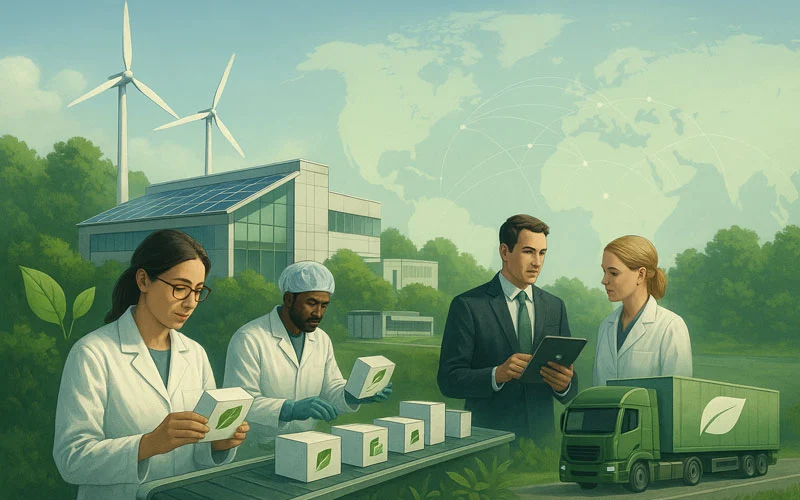The pharmaceutical industry is increasingly becoming concerned with doing good to the environment. With increased demand of medicine, companies realize that to protect human health is to protect the planet. Production, packaging, and transportation of medicines could be detrimental to the environment, particularly in the case of biologic and cannabis products.
Nowadays, the majority of drug manufacturers are willing to save on waste, minimize pollution and consume less energy. New science causes people to expect them to do what is responsible and make actual changes.
These actions align with the industry's growing commitment to green pharmaceutical practices and the shift toward sustainable business models.
Table of Contents
1. Sustainable Manufacturing & Green Chemistry
Green chemistry is concerned with the production of medicines in a safe and less wastage manner. Firms are dumping the toxic chemicals and obsolete and dire processes in favour of cleaner processes.
Key improvements include:
- The use of hazardous solvents can be avoided and other solvents that may be reused or decomposed can be used.
- Use energy saving equipment and work in a continuous flow.
- Select raw materials which are renewable and use natural resources not excessively.
2. Ethical Sourcing of Raw Materials
Sustainable sourcing involves purchasing of raw materials in a manner that safeguards the environment and that of human rights. Pharmaceutical companies are increasingly becoming concerned with the origin of their active ingredients and their preparation.
Current trends:
- Select vendors that treat their workers well and apply environmentally friendly mining.
- Make the entire supply chain transparent.
- Select natural or vegetarian materials.
- Encourage local suppliers in order to reduce travel costs and emissions.
3. Eco-Friendly Packaging in Pharma
Medicals are then packaged in ways that prevent spoiling however they produce a lot of plastic waste. Most businesses are re- Packaging to reduce that effect.
Common strategies:
- Use recyclable materials such as paper, cardboard, glass or biodegradable plastic.
- Increase the size of the package and eliminate additional layers.
- You should use reusable or refillable containers whenever possible.
4. Waste Recycling and Management
The production of medicine generates chemical wastes, outdated medication, and packaging material. Mismanagement causes damage to soil, water and human beings. In order to prevent this, firms are upgrading their trash systems.
Key practices:
- Disposing of chemical waste should be treated first.
- Dispose the glass, plastic, and cardboard packaging.
- Conduct programs to collect unused or out of date medicines.
5. Stakeholder Engagement
Without all the people in the supply chain, you can never get to sustainability. Drug firms are educating employees on how to eliminate wastage and manage materials. They are also requesting the suppliers and partners to obey to the environmental standards and report the progress.
Participation of workers, suppliers and community partners will establish trust, responsibility and long term positive outcomes.
6. Conclusion
The pharmaceutical industry is making steady progress toward building sustainable, responsible supply chains. By embracing green chemistry, ethical sourcing, eco-friendly packaging, effective waste management, and stakeholder collaboration, pharma companies are reducing their environmental impact while enhancing long-term efficiency and public trust.
These actions position the industry not only to meet environmental goals, but also to deliver high-quality, safe medicine in a way that supports a healthier planet. For more on manufacturing innovation, see our guide to green drug manufacturing strategies.

